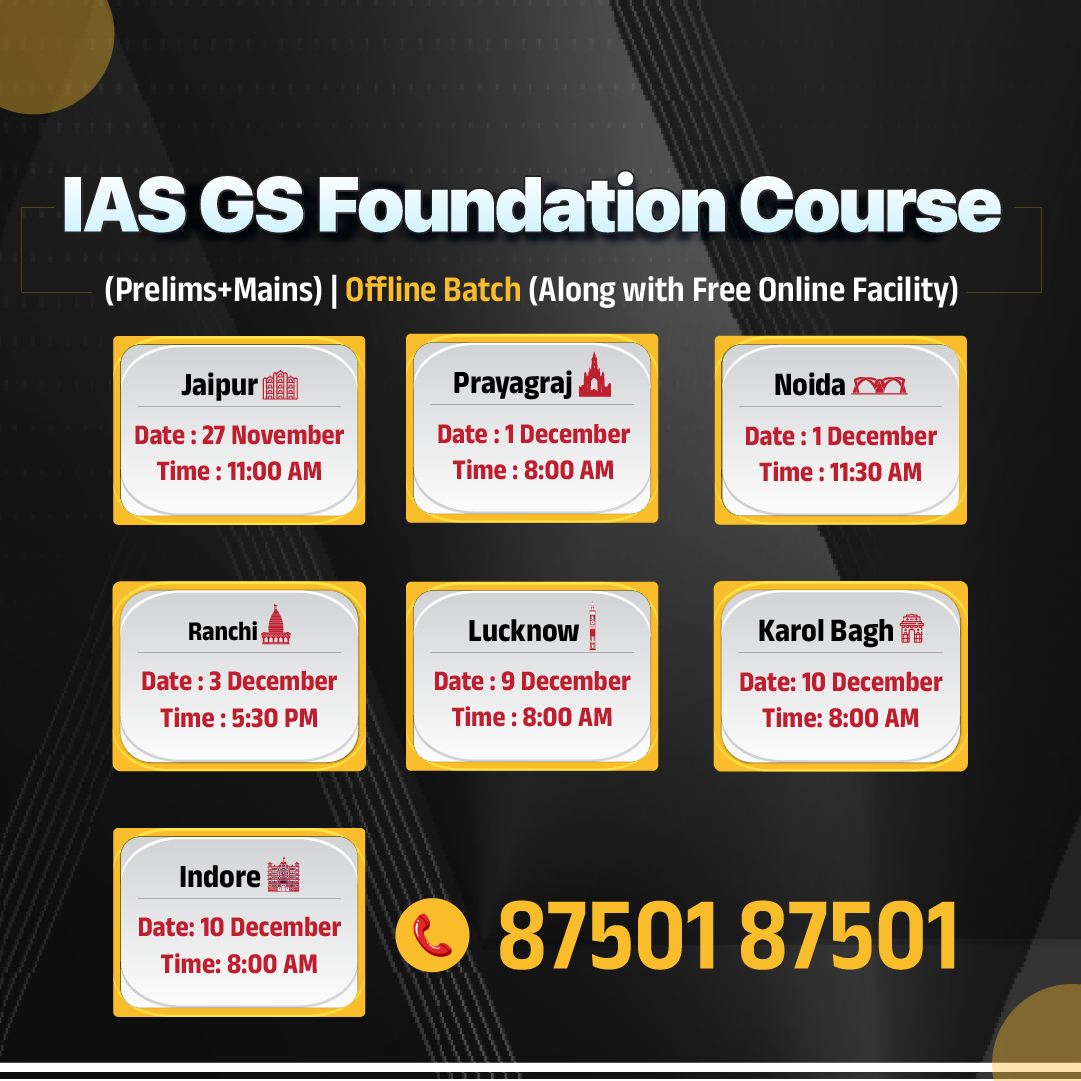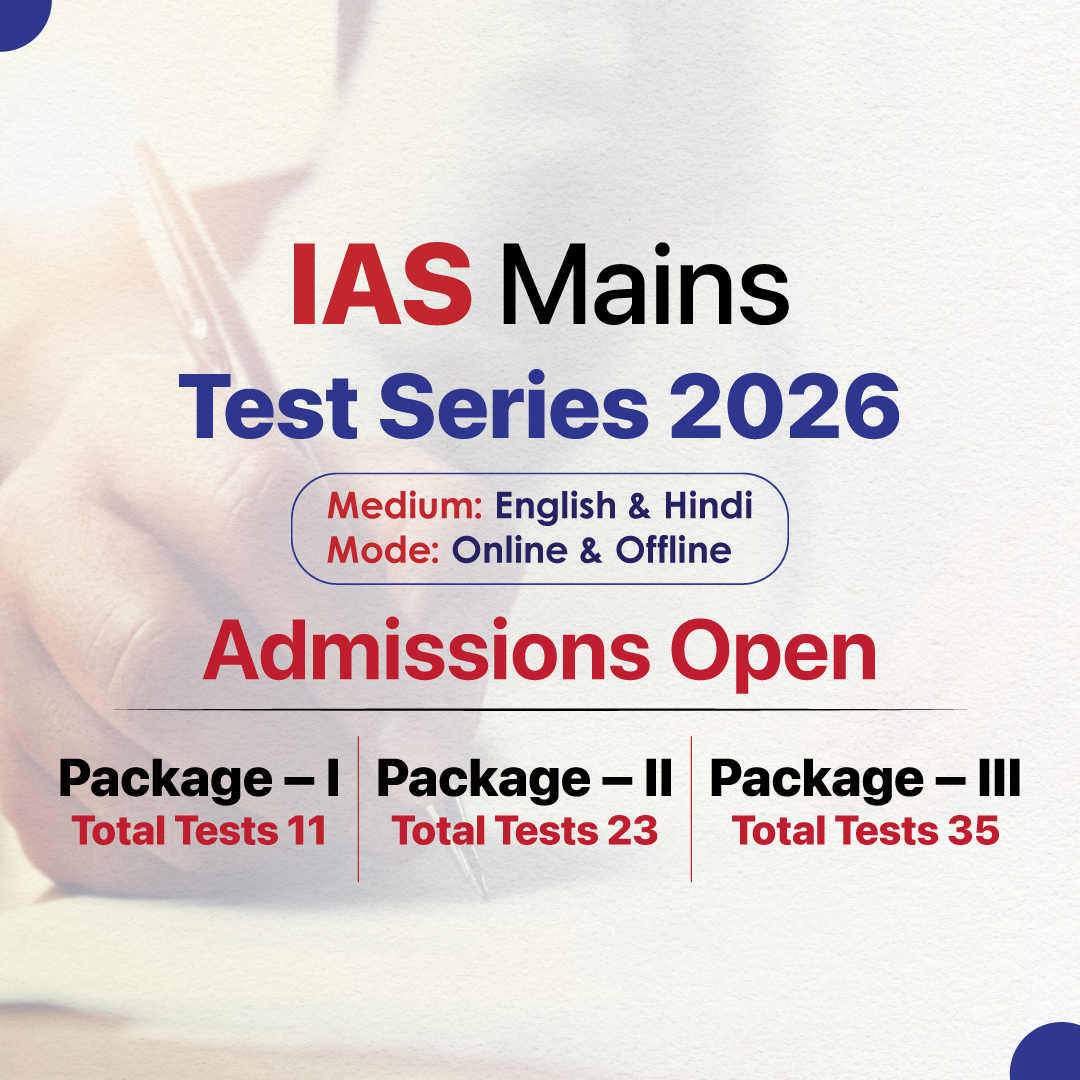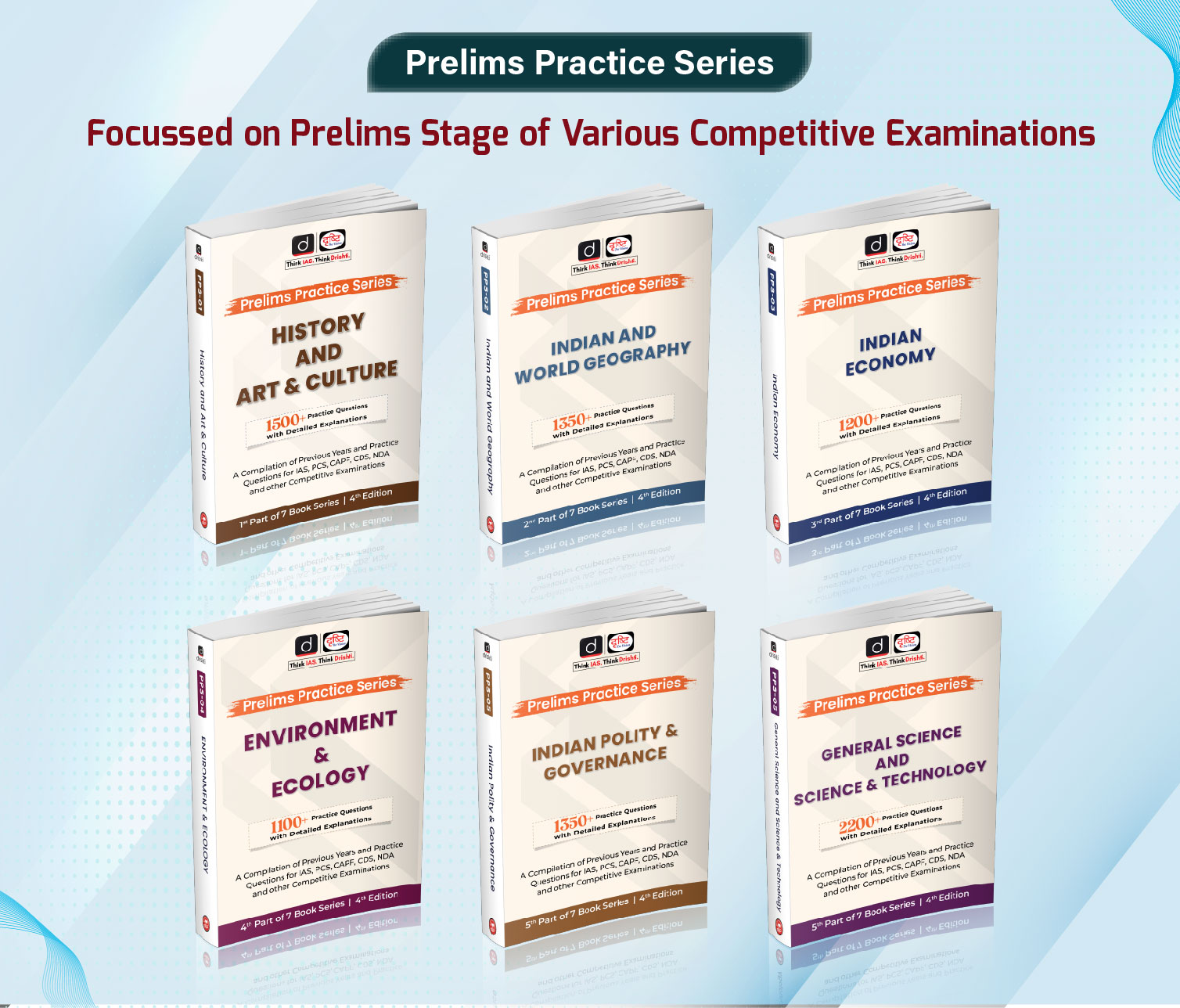Bihar Switch to Hindi
Bihar's Free Electricity and Solar Power Initiative
Why in News?
The Bihar government will offer 125 units of free electricity to 1.67 crore families and install solar power plants over the next three years with consumer consent.
Key Points
Key Highlights of the Announcement
- Free Electricity Scheme: Starting 1 August 2025, 1.67 crore families in Bihar will receive up to 125 units of free electricity, offering significant financial relief to domestic consumers.
- Financial Impact: The state government will bear the cost of providing free electricity, estimated to result in an additional burden of approximately ₹3,375 crore on the state exchequer. A total subsidy of around ₹19,370 crore will be required for this initiative.
- Solar Power Plant Installations: Over the next three years, with the consent of domestic consumers, the state government also plans to install solar power plants on rooftops and at nearby public spaces.
- This initiative aims to provide sustainable energy solutions and reduce the dependency on conventional electricity sources.
- Financial Support: The Bihar government will fully bear the cost of installing solar power plants for extremely poor families under the ongoing Kutir Jyoti scheme.
- For other consumers, the government will provide financial assistance to install solar power plants.
- Target for Solar Energy Production: It is projected that up to 10,000 megawatts of solar energy will be available in the state over the next three years, marking a significant step towards enhancing the state’s renewable energy capacity.
About Kutir Jyoti Scheme
- About: The Kutir Jyoti Scheme is a government initiative in India primarily aimed at improving the quality of life for rural families living below the poverty line (BPL) by providing them access to electricity.
- Launched in 1988-89 as a centrally financed program, the main objective of the scheme was to extend single-point light connections to BPL households in rural areas, including those belonging to Scheduled Castes (SC) and tribal communities.
Uttar Pradesh Switch to Hindi
Pilibhit Tiger Reserve (PTR)
Why in News?
A suspected tiger attack near Pilibhit Tiger Reserve on Thursday killed a person, marking the second such incident in three days, leading officials to consider seeking permission to shoot the tiger.
Key Points
About Pilibhit Tiger Reserve
- It is located in the Pilibhit and Shahjahanpur districts of Uttar Pradesh. It was notified as a Tiger Reserve in the year 2014.
- In the year 2020, it won the international award TX2 for doubling the number of tigers in the last four years.
- It is part of the Terai Arc landscape in the Upper Gangetic Plain.
- The Gomti River originates from this reserve, which is also the catchment area of several other rivers like Sharda, Chuka, and Mala Khannot.
- Flora and Fauna: It is home to a habitat for over 128 animals, 326 bird species, and 2,100 flowering plants.
- Wild animals include tigers, swamp deer, Bengal florican, leopard, etc.
- It consists of dense sal forests, plantations, and grasslands with several water bodies.
About Human-Animal Conflict
- Definition: Human-animal conflict refers to situations where human activities, such as agriculture, infrastructure development, or resource extraction, come into conflict with wild animals, leading to negative outcomes for both humans and animals.
- Government Measures to Tackle Human-Animal Conflict:
- The Wildlife Protection Act, 1972: The act provides the legal framework for the activities, Prohibition of hunting, the Protection and management of wildlife habitats, and the establishment of protected areas, etc.
- The Biological Diversity Act, 2002: India is a part of the United Nations Convention on Biological Diversity. It ensures that the Biological Diversity Act complements rather than contradicts existing laws concerning forests and wildlife.
- National Wildlife Action Plan (2002-2016): It focuses on strengthening and enhancing the protected area network, on the conservation of Endangered wildlife and their habitats, on controlling trade in wildlife products, and on research, education, and training.
- Project Tiger: Project Tiger is a Centrally Sponsored Scheme, launched in 1973.
- Project Elephant: It is a centrally sponsored scheme and was launched in February 1992 for the protection of elephants, their habitats, and corridors.
Uttar Pradesh Switch to Hindi
Pradhan Mantri Dhan Dhanya Krishi Yojana (PMDDKY)
Why in News?
The Uttar Pradesh government has submitted a detailed proposal to the Centre to secure a significant share in the newly launched Pradhan Mantri Dhan Dhanya Krishi Yojana (PMDDKY) for boosting agricultural productivity.
Key Points
About Pradhan Mantri Dhan Dhanya Krishi Yojana (PMDDKY)
- About: PMDDKY is a comprehensive farm programme designed to enhance productivity, promote sustainable practices, and improve livelihoods.
- It was originally announced in the Union Budget 2025–26 and has an annual outlay of Rs 24,000 crore for six years, starting from 2025–26.
- It targets 100 underperforming districts to boost farm productivity through better irrigation, storage, and credit access while promoting sustainable practices.
- It merges 36 schemes from 11 Union Ministries to create a unified agricultural support system.
- It is inspired by NITI Aayog’s Aspirational Districts Programme.
- District Selection Criteria:
- Low Agricultural Productivity: Districts with low agricultural output per hectare.
- Low Cropping Intensity: Regions with limited crop variety or insufficient crop cycles per year.
- Limited Credit Disbursement: Areas with restricted access to financial resources for farmers.
- State Representation: Selection will consider the share of Net Cropped Area and operational holdings in each state/union territory. A minimum of one district will be selected from each state to ensure balanced regional development.
- Implementation and Monitoring:
- District Agriculture and Allied Activities Plans: Each district will have a dedicated plan developed by the District Dhan Dhaanya Samiti, including progressive farmers as members. The plans will align with national goals like crop diversification, water conservation, and agricultural self-sufficiency.
- Monitoring and Evaluation: Progress will be tracked using 117 Key Performance Indicators (KPIs) via a dedicated dashboard, with monthly reviews.
- Central Nodal Officers will be appointed for each district for smooth implementation. NITI Aayog will provide regular guidance and review district plans.
- Committees at Various Levels: Committees at the district, state, and national levels will oversee the planning, implementation, and monitoring of progress to ensure the scheme’s effectiveness.
- Expected Outcomes:
- Farmer Beneficiaries: Approximately 1.7 crore farmers across India are expected to benefit directly.
- Integration of Allied Sectors: The scheme integrates sectors like livestock, dairy, and fisheries to enhance value and create local livelihoods.
- Focus Areas: It emphasizes post-harvest storage, improved irrigation, easier credit access, and the promotion of natural and organic farming, ultimately enhancing rural economic resilience.
About State Government’s Preparation
- The Uttar Pradesh (UP) government has initiated planning to secure a significant share of the scheme’s benefits.
- UP’s agriculture department has reviewed field details and submitted an exhaustive proposal to the Centre for the successful implementation of the scheme.
- UP, being a key agricultural state, is expected to receive a prominent share of the scheme’s allocation.
About Other Complementary Schemes
- UP AGREES scheme: PMDDKY complements the World Bank-aided UP AGREES scheme, aiming to improve agricultural yields in 28 districts of the Purvanchal and Bundelkhand regions.
- Its main objective is to increase agricultural productivity, ensure conservation of natural resources and increase the income of farmers.
- The project will link 10,000 women producer groups and send 500 farmers abroad for advanced training.
- Aspirational District Programme: The Aspirational District Programme is also working to enhance agricultural productivity in the state.
- Launch: Initiated in 2018 by the Government of India to uplift 112 of the most underdeveloped districts.
- Core Philosophy: Shift from "backwardness" to "aspiration" by empowering districts to unlock their latent potential.
- Focus Areas: Health, nutrition, education, infrastructure, and economic opportunities.
Madhya Pradesh Switch to Hindi
National Workshop on Enhanced Gram Panchayat Spatial Development Plan
Why in News?
The Secretary of the Ministry of Panchayati Raj inaugurated the pioneering two-day National Workshop on Enhanced Gram Panchayat Spatial Development Plan, titled “नवीनग्राम – Re-Imagining the Village,” at the Kushabhau Thakre International Convention Centre in Bhopal, Madhya Pradesh.
Key Points
About National Workshop
- Event Details: The workshop is a landmark initiative bringing together 19 partner institutes in planning and architecture.
- It presents enhanced spatial plans for 36 Gram Panchayats across 14 States, marking the largest collaborative effort in India’s rural spatial development history.
- The workshop builds upon the success of the Cross Learning-cum-Interactive National Workshop on Gram Panchayat Spatial Development Plan held in February 2024.
- It represents a significant step towards integrating modern planning principles with Panchayati Raj governance.
- The workshop draws inspiration from the Hon’ble Prime Minister’s vision of Atmanirbhar Gram Panchayats.
- The workshop establishes new benchmarks for rural governance and development, ensuring that scientific spatial planning forms the foundation for sustainable rural growth in India.
- Participants and Stakeholders: The workshop witnessed participation from:
- Elected Representatives of Panchayati Raj Institutions.
- Officers from Panchayati Raj Departments across various States.
- Faculty and students from planning and architecture institutes.
- Town and Country Planning Department officials and government agencies.
- Focus on Financial Sustainability and Stakeholder Engagement: The initiative encourages the use of the Rural Area Development Plan Formulation and Implementation (RADPFI) Guidelines.
- It seeks support from stakeholders such as community members, financiers, policy planners, and technology providers to transform rural landscapes.
- Emphasis on the importance of Own Sources of Revenue (OSR) generation and Corporate Social Responsibility (CSR) partnerships for creating financially sustainable Gram Panchayats.
- Geographical Representation: The inaugural day featured presentations from seven States, including:
- Madhya Pradesh, Gujarat, Andhra Pradesh, Uttarakhand, Maharashtra, Jharkhand, and Karnataka.
- These presentations highlighted the nationwide momentum and diverse implementation approaches in different geographical contexts.
- Madhya Pradesh, Gujarat, Andhra Pradesh, Uttarakhand, Maharashtra, Jharkhand, and Karnataka.
- Progress in Madhya Pradesh: Bilkisganj and Murvas Gram Panchayats in Madhya Pradesh are progressing well with their comprehensive spatial planning implementation.
- Five additional Gram Panchayats in the State will adopt similar approaches, with the Panchayati Raj Department providing complete support for this initiative.
Note
- A Gram Panchayat Spatial Development Plan is a comprehensive plan that guides the physical and spatial development of a gram panchayat.
- It outlines how land should be used, what infrastructure should be built, and how development should be managed to achieve social and economic goals
About NAVEENGRAM Initiative
- NAVEENGRAM – Re-Imagining the Village aims to position India as a global leader in rural spatial development planning.
- The initiative creates replicable models for planned development that reach every corner of rural India while preserving heritage and promoting inclusive growth.
- It transforms villages from administrative units into well-planned communities, optimizing land use, infrastructure development, and sustainable resource management.
Uttar Pradesh Switch to Hindi
Performance of Uttar Pradesh in Swachhta Survekshan 2024-25
Why in News?
Lucknow was ranked the third cleanest city in the country, following Ahmedabad and Bhopal, in the million-plus population category under the Swachhta Survekshan 2024-25, with the winners being honored by President Droupadi Murmu in New Delhi.
Key Points
- Top Performer:
- Lucknow:
- Ranking: 3rd cleanest city in the country (Million-plus population category).
- Milestone: Achieved a 7-star garbage GFC rating, becoming the first city in Uttar Pradesh to do so.
- Prayagraj: Earned special recognition as the Cleanest Ganga Town, securing first place in the country after defeating Varanasi.
- Noida:
- Ranking: Topped the Super Swachh League chart in the 3 lakh-10 lakh population category.
- A new category introduced to rank top-tier performers separately.
- Ranking: Topped the Super Swachh League chart in the 3 lakh-10 lakh population category.
- Lucknow:
- Other Notable Achievements:
- Seven UP Cities in Top 20 (Million-plus category)
- Cities: Lucknow, Agra, Gorakhpur, Kanpur, Ghaziabad, Prayagraj, Noida
- Awards for Maha Kumbh 2025: Special awards for cleanliness and sanitation practices during the Maha Kumbh, highlighting the state's successful sanitation efforts during large-scale events.
- Cities with Top Ratings:
- 5-Star Rating: Agra, Gorakhpur, Kanpur, Ghaziabad, Prayagraj, Noida
- 3rd Place in Safaimitra Surakshit Shaher Category: Gorakhpur
- Top 10 Cleanest Cities (3-10 lakh population): Gorakhpur (3rd), Moradabad (10th)
- Emerging Clean City: Agra (Ranked 32nd nationally)
- Seven UP Cities in Top 20 (Million-plus category)
- New Water-Plus Achievements:
- 16 cities achieved Water-plus status for the first time, including Bijnor and Shamshabad
- Water-plus status awarded to local bodies excelling in sanitation, water management, and recycling practices.
- Among 17 municipal corporations, 13 received Water-plus status, a significant increase from the previous year (only 2 cities had Water-plus status)
- 16 cities achieved Water-plus status for the first time, including Bijnor and Shamshabad
- Improvements in Waste Management:
- Increase in Verified Door-to-Door Garbage Collection: Up from 48% to 62% in one year
- Increase in Garbage Processing: Up from 48% to 85% in one year
- Statewide Improvements:
- Urban Local Bodies (ULBs): 83 urban local bodies improved their rankings compared to the previous year
- ODF++ ULBs: 337 ULBs declared as ODF++ (Open Defecation Free++), a significant increase from the previous year (129 ULBs).
Swachh Survekshan
- About: Swachh Survekshan, conducted by the MoHUA since 2016, is the world’s largest urban sanitation and cleanliness survey under the Swachh Bharat Mission–Urban (SBM-U).
- Swachh Survekshan Awards are annual rankings and recognitions given to cities and urban local bodies (ULBs) under the Swachh Survekshan.
- It aims to foster citizen participation, generate awareness on sanitation, and promote competitive federalism through performance benchmarking.
- Swachh Survekshan 2025: Under the revamped framework of Swachh Survekshan 2025( 9th edition), indicators have been simplified and restructured into 10 comprehensive sections.
- The annual theme for 2025 is “Reduce, Reuse, Recycle (3R)”, promoting circular economy principles in line with the Jaipur Declaration adopted at the 12th Regional 3R and Circular Economy Forum (March 2025).
Maharashtra Switch to Hindi
Maharashtra Clears Loan Guarantee for Metro Expansion
Why in the News?
The Maharashtra government has approved a loan guarantee for six Metro projects being implemented by the Mumbai Metropolitan Region Development Authority (MMRDA).
- These projects are part of MMRDA's broader goal to create a 300-km metro network by the end of the decade.
Key Points
- Government Approval: The approval facilitates continued funding from international financial institutions, ensuring that the ongoing construction work for these Metro corridors proceeds smoothly.
- The approval allows for the continuation of tendering and contracting activities for these Metro lines.
- Construction and Planning: These Metro corridors are either under construction or in advanced planning stages, requiring significant funding due to the complexity of both elevated and underground alignments.
- Project Costs: The cumulative cost for the six Metro corridors exceeds Rs 36,000 crore, and the financial support is vital to avoid delays and prevent cost escalation.
- Funding from Multilateral Agencies: With the government guarantee, MMRDA can now approach agencies like the Asian Infrastructure Investment Bank and the Asian Development Bank to secure loans for the projects.
- Loan Repayment: The responsibility for repaying the loans, including interest and other liabilities, rests entirely with MMRDA, while the state's role is limited to acting as a guarantor.
- The state guarantee is crucial to meet the eligibility criteria set by the funding institutions, preventing potential delays in negotiations or costly financial restructuring.
- Expected Benefits: The new metro lines are expected to ease congestion in various areas, improve connectivity between key regions, provide a vital link to the airport, and serve a large number of daily commuters, thereby reducing road traffic.
Note:
- A ‘guarantee’ is a legal obligation for a State to make payments and protect an investor/lender from the risk of default by a borrower.
- A guarantee, as per the Indian Contracts Act, 1872, is a contract to “perform the promise, or discharge the liability, of a third person in case of his default.
Asian Development Bank (ADB)
- About: ADB is a multilateral development bank established in 1966 with a mission to foster economic growth and cooperation in the Asia-Pacific Region.
- Headquarters: Located in Manila, Philippines.
- Membership: Comprises 68 members, including 49 from Asia and the Pacific, and 19 from other regions.
- India and ADB: India is a founding member and the 4th largest shareholder (after Japan, the US, and China) of ADB.
- ADB's Support to India: ADB aligns its support with India’s priorities for sustainable, climate-resilient, and inclusive growth, in line with its ADB’s Strategy 2030 and the country partnership strategy for 2023–2027.
Asian Infrastructure Investment Bank (AIIB)
- About: The Asian Infrastructure Investment Bank (AIIB) is a multilateral development bank established in 2016 with a mission to finance infrastructure for tomorrow, focusing on green, sustainable, and connected infrastructure in Asia and beyond.
- Headquarters: Located in Beijing, China.
- Membership: Comprises 110 approved members as of 2025, spanning Asia, Europe, Africa, Oceania, South America, and North America.
- Membership includes both regional (Asia and Oceania) and non-regional countries, reflecting a broad international reach.
- India and AIIB: India is a founding member and the second-largest shareholder of AIIB, after China. India holds about 7.6% of the voting shares.
- India is also the largest borrower from AIIB, having secured more project financing than any other member country.
- India’s infrastructure projects have received more than USD 10 billion in funding as of 2023, covering sectors such as transport, energy, and urban infrastructure.


.png)








.png)


.jpg)



 PCS Parikshan
PCS Parikshan.png)



